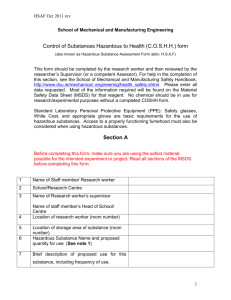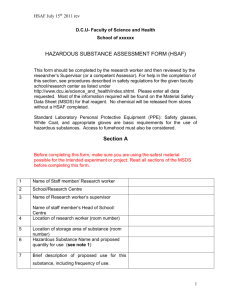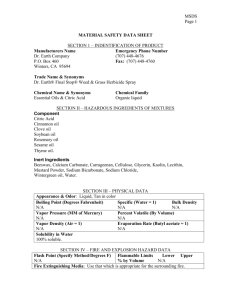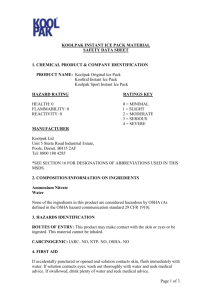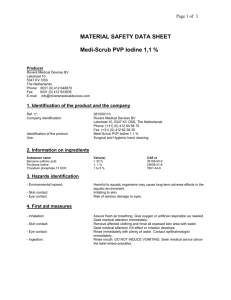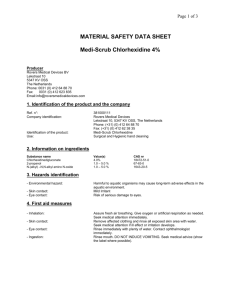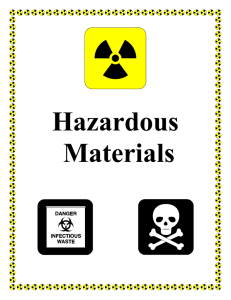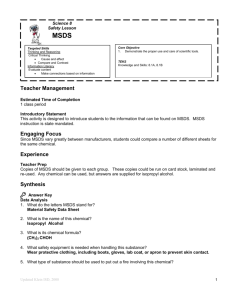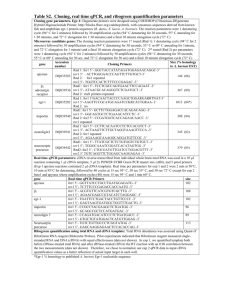HSAF document
advertisement
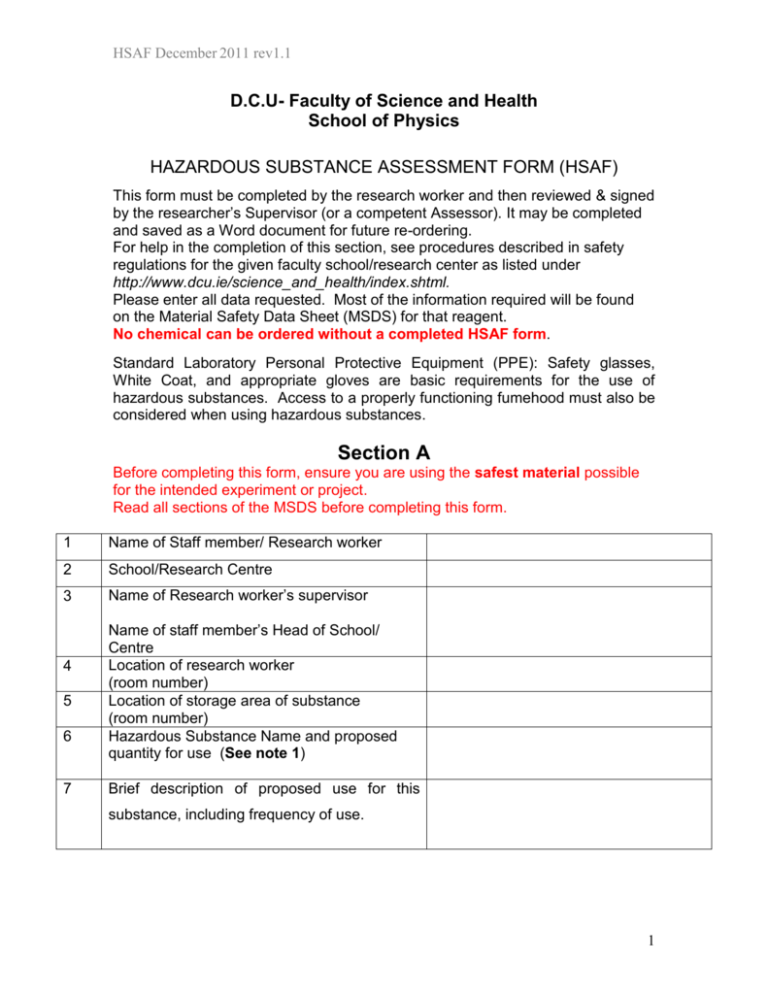
HSAF December 2011 rev1.1 D.C.U- Faculty of Science and Health School of Physics HAZARDOUS SUBSTANCE ASSESSMENT FORM (HSAF) This form must be completed by the research worker and then reviewed & signed by the researcher’s Supervisor (or a competent Assessor). It may be completed and saved as a Word document for future re-ordering. For help in the completion of this section, see procedures described in safety regulations for the given faculty school/research center as listed under http://www.dcu.ie/science_and_health/index.shtml. Please enter all data requested. Most of the information required will be found on the Material Safety Data Sheet (MSDS) for that reagent. No chemical can be ordered without a completed HSAF form. Standard Laboratory Personal Protective Equipment (PPE): Safety glasses, White Coat, and appropriate gloves are basic requirements for the use of hazardous substances. Access to a properly functioning fumehood must also be considered when using hazardous substances. Section A Before completing this form, ensure you are using the safest material possible for the intended experiment or project. Read all sections of the MSDS before completing this form. 1 Name of Staff member/ Research worker 2 School/Research Centre 3 Name of Research worker’s supervisor 4 5 6 7 Name of staff member’s Head of School/ Centre Location of research worker (room number) Location of storage area of substance (room number) Hazardous Substance Name and proposed quantity for use (See note 1) Brief description of proposed use for this substance, including frequency of use. 1 HSAF December 2011 rev1.1 8 Hazards Identification (See note 2) List the Risk/ Hazard Statements “R” or “H” phrases 9 (See section 2 of MSDS) Hazards Identification continued. List the Safety/ Precautionary Statements “S” or “P” phrases 10 (See section 2 of MSDS) Material Incompatibilities (See Section 10 of MSDS – stability and reactivity) 11 List basic first aid measures if exposed to the substance (See section 4 – first aid measures) 12 How will you dispose of waste generated? Consider the following points: - Unused chemical - The waste generated using this substance - Need to segregate waste streams? - Where will this waste be stored (Check local practice within your school/ centre or school safety representative.). 13 What precautions will be taken to eliminate the inhalation risks specified in the MSDS for this substance, e.g. PPE, fumehood, breathing apparatus? (See Section 8 of MSDS for exposure controls) 14 If the substance is a known carcinogen, teratogen, or mutagen, then sections 15 – 23, must be completed. 2 HSAF December 2011 rev1.1 Section B 15 What measures are in place to minimise exposure? 16 Are additional warning signs required to minimise risks to other users (e.g. pregnant researchers etc) 17 Are storage and labelling provisions adequate? 18 Does the working area require further demarcation? Is further PPE required? e.g. dust mask, respirator, etc 19 20 Is health surveillance recommended? If so, do not proceed with experiment or purchase the reagent. Consult with your supervisor. 21 Is the risk in using this substance acceptable? Yes or No (If ‘No’ do not complete this assessment without further consultation) Any other details 22 By completing this assessment, the research worker acknowledges the risks associated with using this substance and will take all necessary steps to ensure that this assessment is followed at all times when using this substance. Date: Signature of Research worker: Date: Signature of Supervisor: 3 HSAF December 2011 rev1.1 Standard emergency procedures to be followed when using this substance: Spill release: In the event of a spill, LEAVE THE AREA IMMEDIATELY. ! LOCK ACCESS DOOR TO AREA WHERE POSSIBLE AND DISPLAY A ‘DO NOT ENTER!!’ BARRIER SIGN ON THE LABORATORY DOOR. Inform technical staff inside normal university working hours, or inform security staff/fire services outside normal university working hours. Event of fire. Activate fire alarm. Evacuate work area. Inform the fire wardens, security or technical staff as appropriate. Waste disposal: Consult procedures described in safety regulations for the given faculty school/research centre as listed under http://www.dcu.ie/science_and_health/index.shtml or check local practice within your school/ centre or school safety representative ________________________________________________________________ 4 HSAF December 2011 rev1.1 Note 1: Order the minimum quantity required for the experiment regardless of the discounts offered by vendor for larger quantities. The cost of waste disposal for unused material far outweighs the savings for buying in bulk. See section 11 for available toxicological information -----------------------------------------------------------------------------------------------------------Note 2: See section 2 of MSDS and note the Hazard/ Precautionary statements or the Risk and Safety phrases. Copy and paste the appropriate pictogram into section 8 of this HSAF form. Global Harmonisation System for the labelling of chemical agents The Global Harmonisation System for the labelling of chemical agents came into effect as from December 2010. What this means for users is that there will be a ‘crossover’ period between the older system for the safety classification of chemical reagents (R and S phrases), and the newer G.H.S. system. Full implementation of the new G.H.S. system will be effective by June 2015. ------------------------------------------------------------------------------------------------------------ 5
